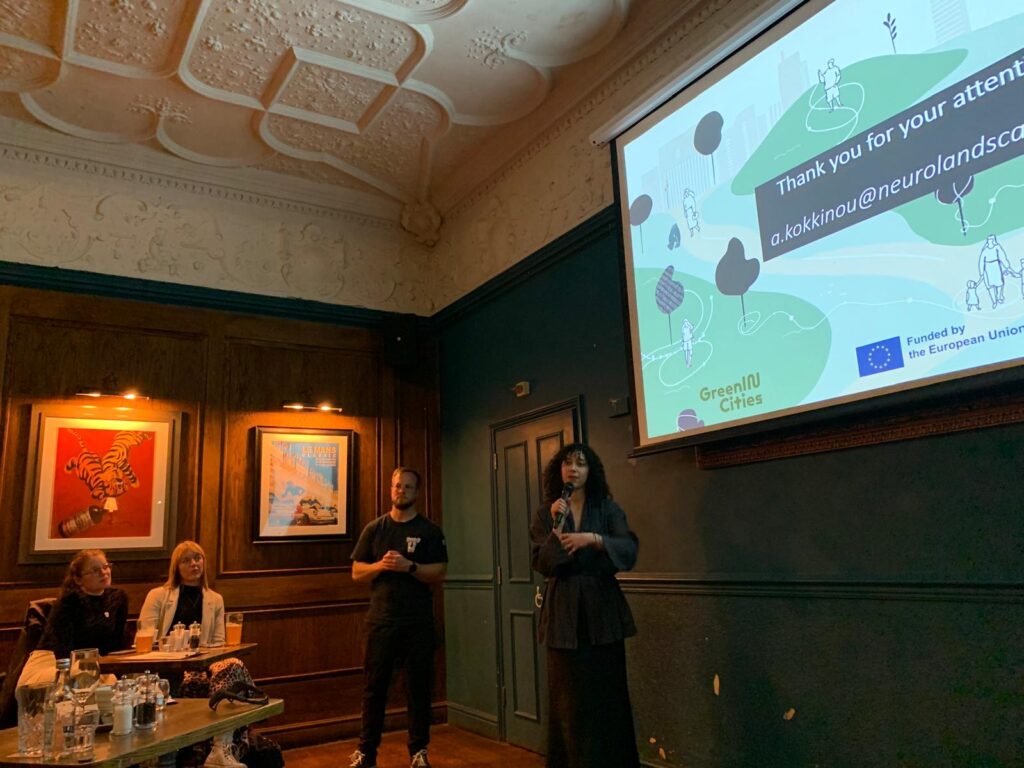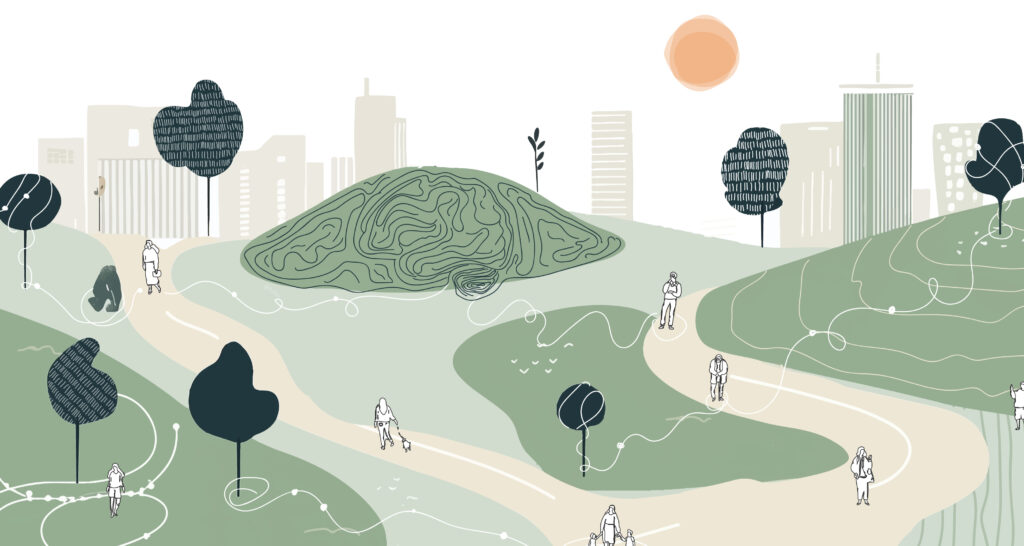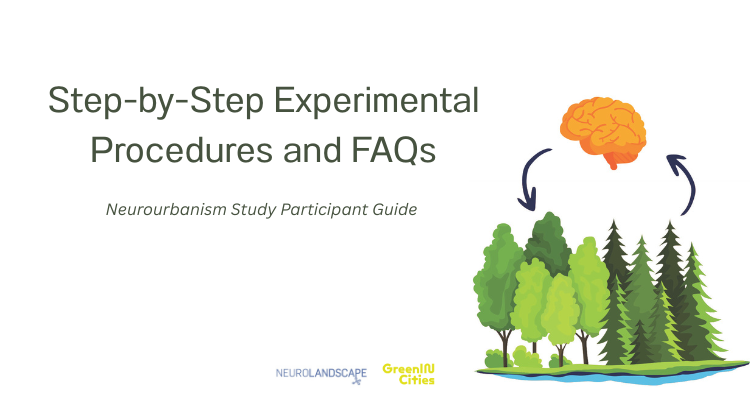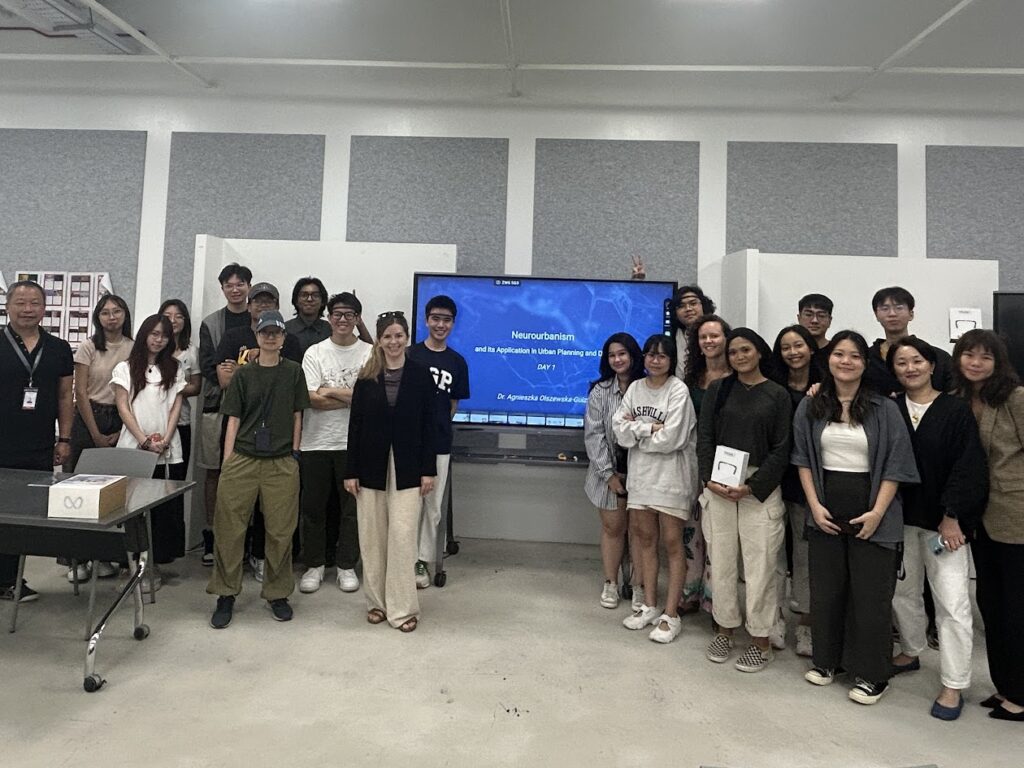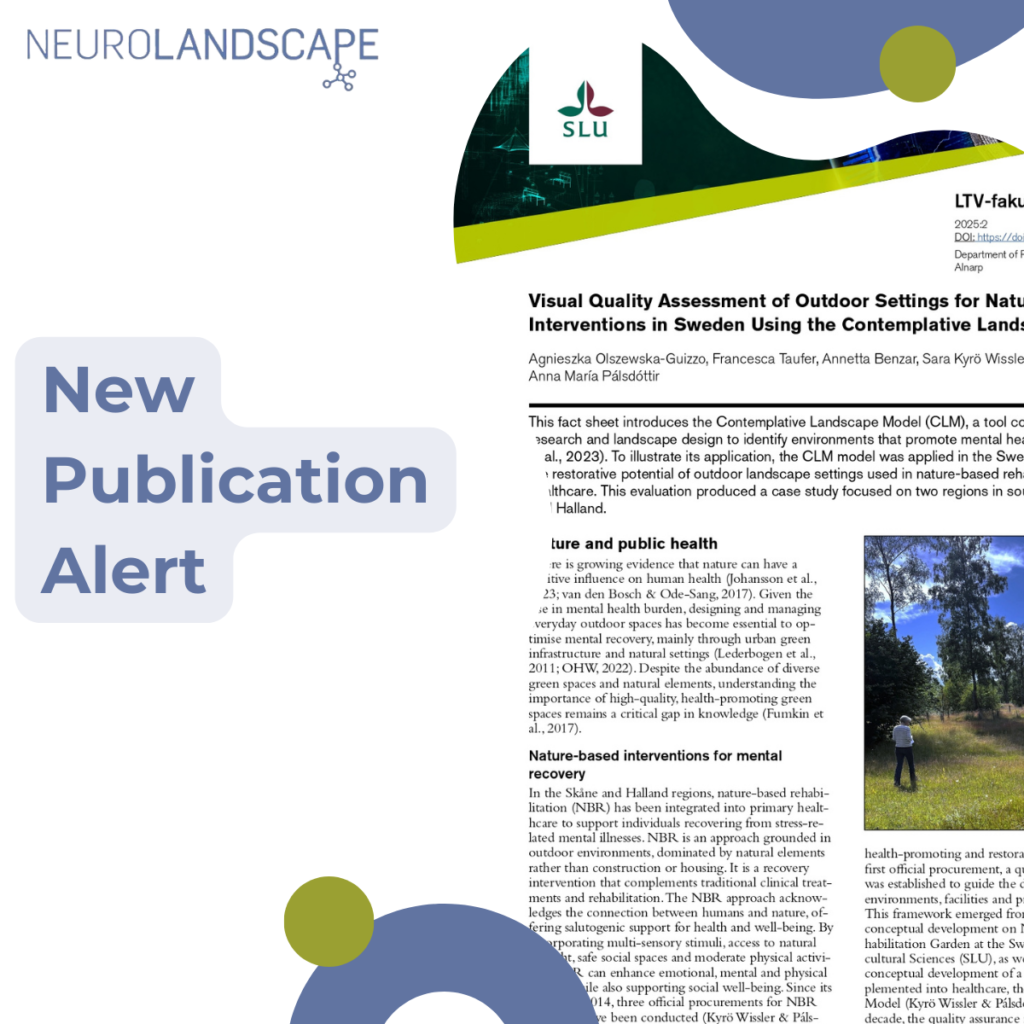We are launching the recruitment for participants of the Neurourbanism study in Helsinki for August 2025! Sign and and help up shape mental health and well-being!
Category: research
Pint of Science in Exploration on How Cities Shape Our Wellbeing
On May 19, 2025, Anastasia Kokkinou from NeuroLandscape took the stage at Pint of Science in an engaging session titled “How Cities Shape Our Wellbeing.” The event brought together a curious audience with diverse academic backgrounds – from archaeology to cognitive neuroscience – sparking lively discussions on urban design and mental health. The tickets sold out way in advance so we were expecting Read More
What is Neurourbanism?
Places have emotions. They hum with the memories of those who have lived, laughed, and lingered in their corners. They carry the weight of joy, sorrow, and everything in between—because we, the people, imprint our feelings onto the spaces we inhabit. However, it’s more than remembrance. Places have the power to mold us. A sunlit Read More
Neurourbanism Assessment Step-by-Step Guide & FAQ
In the Neurourbanism study, we are measuring brain activity before and after what we call a “Nature-based Intervention” at specific sites. We have selected your neighbourhood as one of our study sites. We will collect data in two phases: first, before the intervention (in 2025), and then after (in 2027). Both times, we will be following Read More
Calling Nova Gorica locals!
Launching the recruitment for participants of the NUA study in Nova Gorica for April/May 2025! Sign and and help up shape mental health and well-being!
Exploring Neurourbanism: A Hands-On Workshop in Singapore | NAFA
On February 25-26, 2025, a group of Biophilic Design students of NAFA, gathered for an immersive workshop titled “Neurourbanism and its Application in Urban Planning and Design,” led by Dr. Agnieszka Olszewska-Guizzo. This two-day event blended theory and practice, offering participants a unique opportunity to explore how brainwave data can inform urban design. Day 1: Theory and Fieldwork Read More
A few words on climate change, mental health and gender
A recent publication tackling the intersection of climate change and health, developed by members of the NeuroLandscape team, has been released in the book Climate Change and Health Hazards: Addressing Hazards to Human and Environmental Health from a Changing Climate, edited by Walter Leal Filho, Diogo Guedes Vidal, and Maria Alzira Pimenta Dinis. The chapter, Read More
ICUH 2024: Green Care for Mental Health Equity and its Main Players
We are excited to share that our CEO, Dr. Agnieszka Olszewska-Guizzo, and our Gender Equality Officer, Dr. Weronika Gąsior, participated in the International Conference on Urban Health (ICUH2024) in Marrakesh, Morocco, to present the results from Work Package 2 of the GreenMe project. The conference, hosted by the International Society for Urban Health (ISUH), Read More
NeuroLandscape in Cork: GreenInCities Second Consortium Meeting
Cork, UK – October 8-9, 2024 Earlier this month, the NeuroLandscape team had the pleasure of attending the GreenInCities (GIC) Second Consortium Meeting in the vibrant city of Cork, Ireland. Hosted by the University College Cork (UCC) and Cork City Council, the two-day event gathered the international project partners to advance our shared mission: urban Read More


